15th April 2020 marks the 75th anniversary of the liberation of Bergen-Belsen Concentration Camp. The Library and colleagues from the Stanley Burton Centre for Holocaust and Genocide Studies were due to work together on a project to appropriately recognise the involvement of British troops and nurses in the liberation of the Concentration Camp. Unfortunately, this important communal project seemed less viable to continue due to the closure of the University. At a time like this understandably priorities shift and our ability to act as business as usual becomes more challenging. It does however seem fitting for us to still concentrate on recognising the efforts of emergency and medically trained staff, whether that is now or 75 years ago. Two staff members at the Library have continued in this project, aiming to not be entirely undone by the current climate. The decision to post this article under the banner of Read at Leicester was made to coincide with other world wide events we aim to commemorate through the Library’s promotion of research, reading for pleasure and as an aid to further learning and education.
The importance and effect of the liberation of Bergen-Belsen on the British psyche was as momentous in 1945 as the Coronavirus Pandemic will be to all of us now, as we have heard tell and have been witness to ourselves this Pandemic has altered our lives in such a way as we have never felt outside of Wartimes. Of course, we don’t suggest that these events are comparable in their details but the all-consuming collective effect of the event on millions of people is. This article is intended to provide a brief history of the camp’s existence and an insight into the conditions of the camp’s liberation, paying particular attention to how the liberation felt from a nurse’s perspective. Our intention is to commemorate the work carried out by all those that were involved in the camp’s liberation and to encourage us all to take a moment to recognise this historic event. We would also invite you to explore more widely around the subject should you wish. The Library holds many physical and digital resources that may be of some interest, some of which are linked at the end of this article.
Warning: please be aware that there are some photographs of dead bodies used in this article that you may find distressing.
The Liberation of Bergen-Belsen
“Belsen was a sadistic, long-drawn out process of starvation, of violence, of terror, of the deliberate spreading of infection and disease.”
Bergen-Belsen opened in 1940 and ran until 1945, it began as a prisoner of war camp which held construction workers, prisoners of war, exchange prisoners and evacuees from across Europe. Over time the structure of the camp changed; sub camps were created and were ran by the SS. The subcamps held Jews, Gypsies, criminals and prisoners of war. Throughout the camps existence it did not operate gas chambers such as those in Auschwitz, instead thousands of people were persecuted and died from inhumane conditions such as starvation, dehydration, exhaustion from forced labour, unsanitary conditions and disease.
On 2nd December 1944, the command was handed over to the SS captain Josef Kramer, who was as camp commandant at Auschwitz-Birkenau. He had been responsible for the murder of several hundred thousand Hungarian Jews, and who arrived in Bergen-Belsen with many other SS staff after the evacuation of Auschwitz. Kramer ordered that no food was to be given to Jews for an entire day. Neglecting inmates of basic sanitation, food and water. Thousands suffered from dysentery and stomach diseases and from early 1945 typhus (spotted fever, carried by lice), spread rapidly. It was in the last few weeks when the SS guards afraid of infections, virtually withdrew from the camp, abandoning the inmates to their fate.
The remaining SS realised that the camp was soon to be lost to the British troops. A negotiation of the handover was agreed, and guards wore white arm bands to ensure that the British soldiers knew the surrender of the camp would be done without violence. When soldiers and medical staff arrived at the camp they were met with a scene of unimaginable atrocity. The violence in its most horrific nature had already been done.
British medical officer Brigadier Glyn Hughes said,
“no description nor photograph could really bring home the horrors that were there outside the huts, and the frightful scenes inside were much worse. There were various sizes of piles of corpses lying all over the camp, some outside the wire and some in between the huts. The compounds themselves had bodies lying about in them. The gutters were full and within the huts there were uncountable numbers of bodies, some even in the same bunks as the living. Near the crematorium were signs of filled-in mass graves, and outside to the left of the bottom compound was an open pit half-full of corpses.”
A total of 50,000 people died at Bergen-Belsen, 13,000 of them after the camp was liberated. The importance of medical assistance was vital to the rehabilitation of many of the camps surviving inhabitants but the challenges that came with bringing individuals back to good health from the brink of death was great.
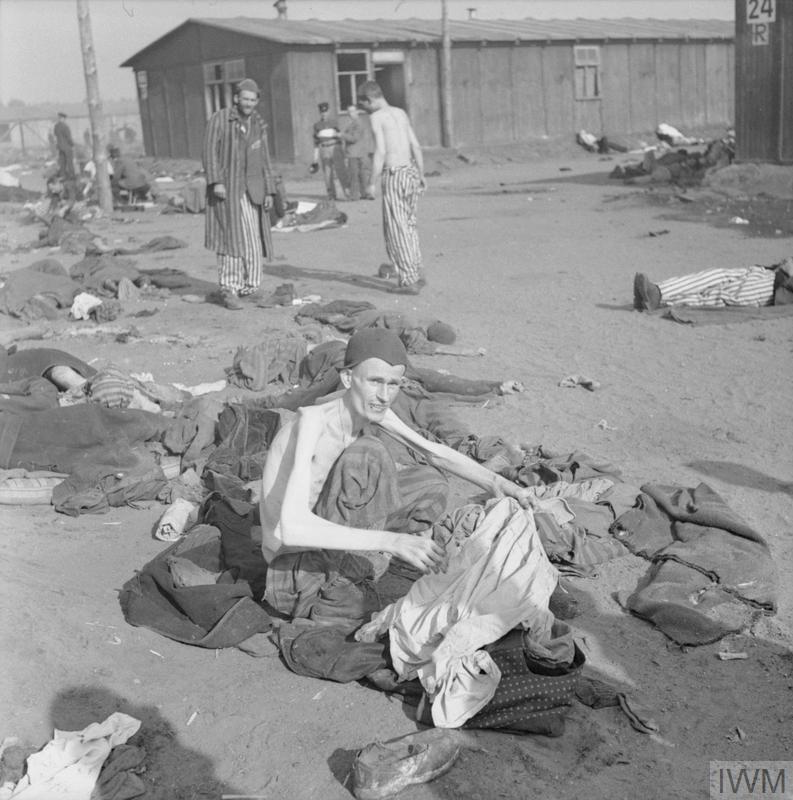
The British Army, the Red Cross, St John Ambulance and the Society of Friends remained in the camp to try to save the lives of those remaining there. Among these workers were several Sisters from Queen Alexandra’s Imperial Military Nursing Service and its Reservists, as well as nurses from across the world. Distributing food and medicine was the priority, trucks brought packs of food containing enough to last a soldier 14 days: tinned bacon, sausages, steak and kidney pudding, butter, cheese and jam. Unfortunately for many, their bodies could not cope with the richness of the foods and 2000 people died as a result.
The starvation of the camp’s inmates was so severe that many had lost the power of swallowing all together, the nurses fed them with teaspoons, but as fast as the soup was put in, it dribbled out. Caring for them was incredibly complex both physically and mentally. Molly Silva Jones, a British nurse of the Red Cross recalled instances of trying to administer injections to patients of the camp.
“Difficulty was experienced in giving injections in the wards at first because the patients thought this was a prelude to being sent to the crematorium. The mad doctors of Belsen had injected benzene, for what reason it was not known, perhaps to make them burn better”
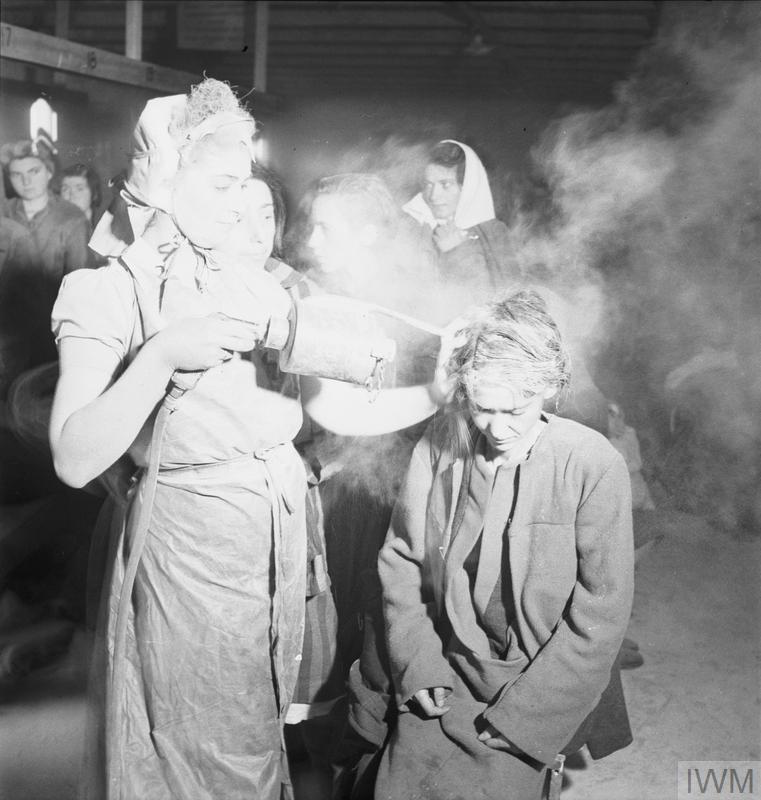
Copyright: © IWM. Original Source
The recorded history of nurses involvement in the liberation of Bergen-Belsen is limited, this was not due to an intentional disguise or erasure of their experiences and impact on the liberation, but mostly due to the general hiddenness of nurses and their work and due to their own desire to forget. Molly recorded in her diary the day after first entering Bergen-Belsen,
“Who could imagine that a Concentration Camp could be hidden in such country? It seemed fantastic, the peace of the pine woods becoming sombre and sinister. On the left we caught the first glimpse of barbed wire through which people peered at us, strange figures clad in blue striped pyjamas. Increasing gradually was an indescribable stench that pervaded everything… Possibly none of us had ever been so stirred – with pity – shame – remorse – yes, because even in 1934 we had heard of these camps and had not realised, not wanted to realise, that such things could happen. And lastly but not least we were stirred with a cold anger against those primarily responsible, the Germans, an anger which grew daily at Belsen. Stirred also an increased desire to help; nothing we could do was enough to restore… some measure of mental and physical health. We went back to the road without speaking. We knew the uselessness of words, not for the last time at Belsen.” Molly Silva Jones
A nurse from Leicester, Erti Wilford who worked at Bergen-Belsen for almost two years was interviewed for the East Midlands Oral History Archive on her experiences there. She too speaks of the approach to Belsen and the dreadful smells which emanated from it five miles before they reached the gates.
“Never seen so much suffering and lice and filth. At Belsen they were just bag of bones and it was just dreadful, but some of them lived, it was quite incredible”
Erti Wilford
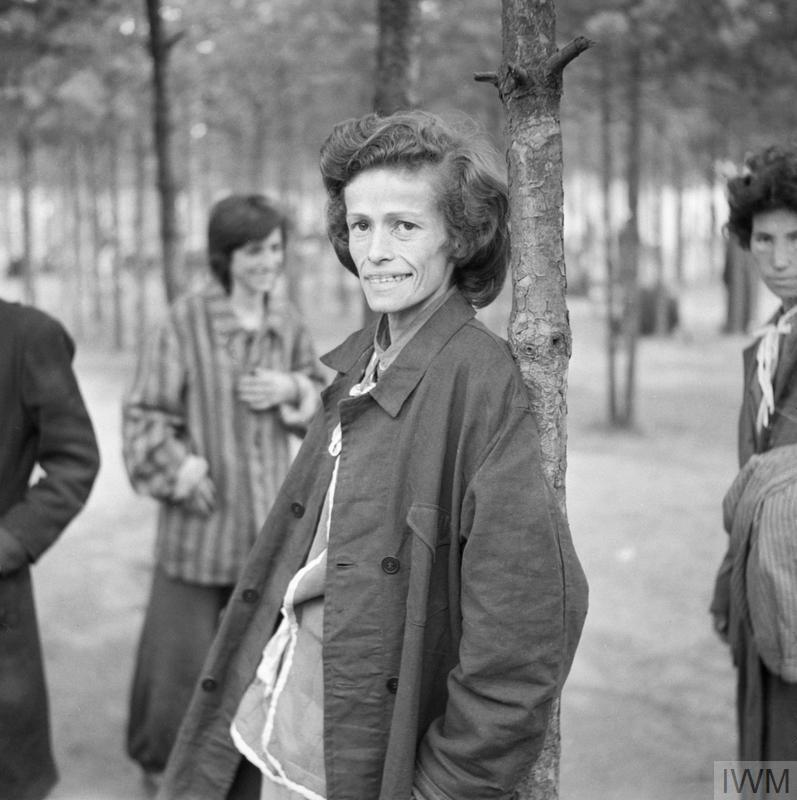
Erti’s interview gives us an amazing insight into the changed humanity of those associated with the camp. As like many other concentration camps children were sentenced to very early deaths, at Belsen she explains that children born there would be murdered immediately after their birth. The doctor working at the camp had been instructed by the SS to not allow delivered babies to live once they had been born and to terminate as many pregnancies as possible. After the camp’s liberation the doctor was confused and amazed that the British were allowing babies to live and not be taken away from the mothers.
“it was one of those things that was so instilled that she wasn’t allowed to keep the babies and it was great excitement when she delivered it”.

Copyright: © IWM. Original Source
This change in humanity and people’s outlook on the world was unsurprising due to the horrendous nature of the camp. The liberation was not only able to save people’s lives but to do everything it could to change people’s lives going forward, trying to undo some of the learned behaviours and trauma of their experiences there. Erti speaks about the absence of children in the camp when they first arrived, but that some were smuggled in by some ‘girls’ who were able to start new lives in Sweden after the liberation, but not all children were so fortunate. Two of the camp’s most notable deaths were of Anne Frank and her sister Margot, they were transported from Auschwitz at the end of October 1944 and taken to Bergen-Belsen. As the typhus epidemic broke out, both Margot and Anne contracted the virus and sadly died. It is estimated that Anne may have died in either late February or early March and that both of their bodies were likely to have been buried in one of Bergen-Belsen’s mass graves. It was only one month after their deaths that the camp was liberated.
“Today, the name of Belsen still evokes ideas of a system of annihilation, of incredible suffering, of the utterly pitiless neglect of human values, of anti-Semitic brutalities, and of the ‘Final Solution of the Jewish Question’.”
Belsen History and Memory
The terrific amount of dead bodies lying around the camp upon the liberator’s arrival and the dead that would follow in the months to come demanded immediate attention. SS guards were put to work collecting the corpses and taking them to the pits dug by a bulldozer provided by Royal Engineers. The guards were given the same rations as the inmates before release and were worked until they dropped.
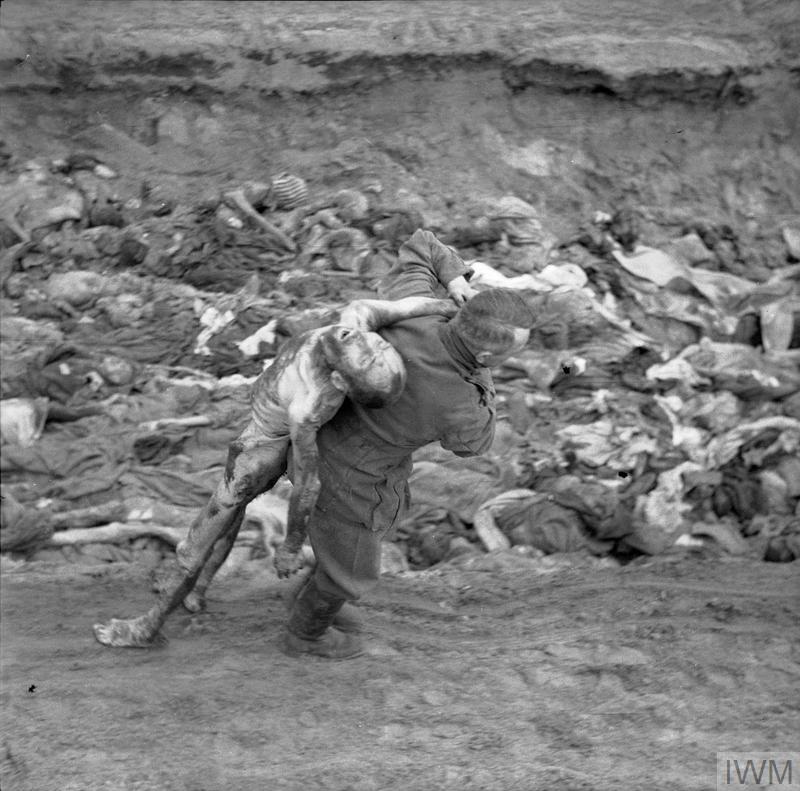
Copyright: © IWM. Original Source
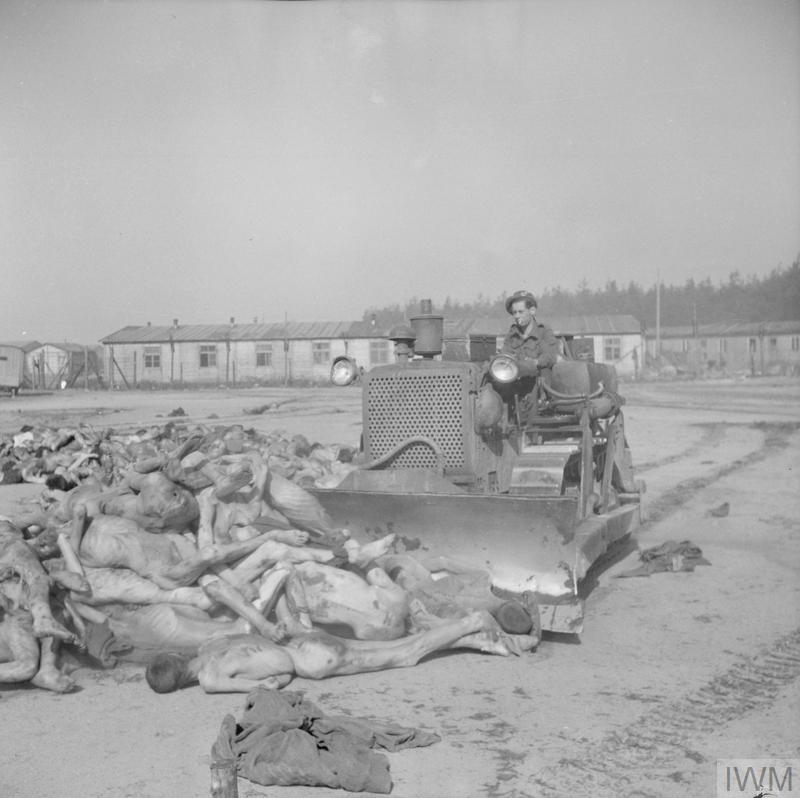
One of the SS soldiers took their own life a day after the work began, while two others were shot whilst attempting an escape. The SS guards were eventually sent to trial and Erti Wilford spoke of her attendance at the trials which she stayed in Germany to witness.
“We felt very bitter naturally (towards the German soldiers) but there was a job to be done and we just got on with it. My biggest joy was going to court, when they sentenced them to death…it was great to see those that had put them all through it…it was very interesting…they had a fair trial, everyone was asked in about five languages one question, it was boring…but we were there when they sentenced them, we thought well it was worthwhile after all, it sounds awful to say because they hung them, 6 or 7 were hung but it was very interesting.”
The liberation of Bergen-Belsen was dubbed as Britain’s finest hour, it enhanced the British view of troops triumphing over evil, and is certainly associated with British history more so than the history of the Jewish people, their overwhelming loss was more widespread than Belsen alone. Liberators were able to bring good will, health, security and of course liberality to those that had been subjected to the terror of the camp for years.
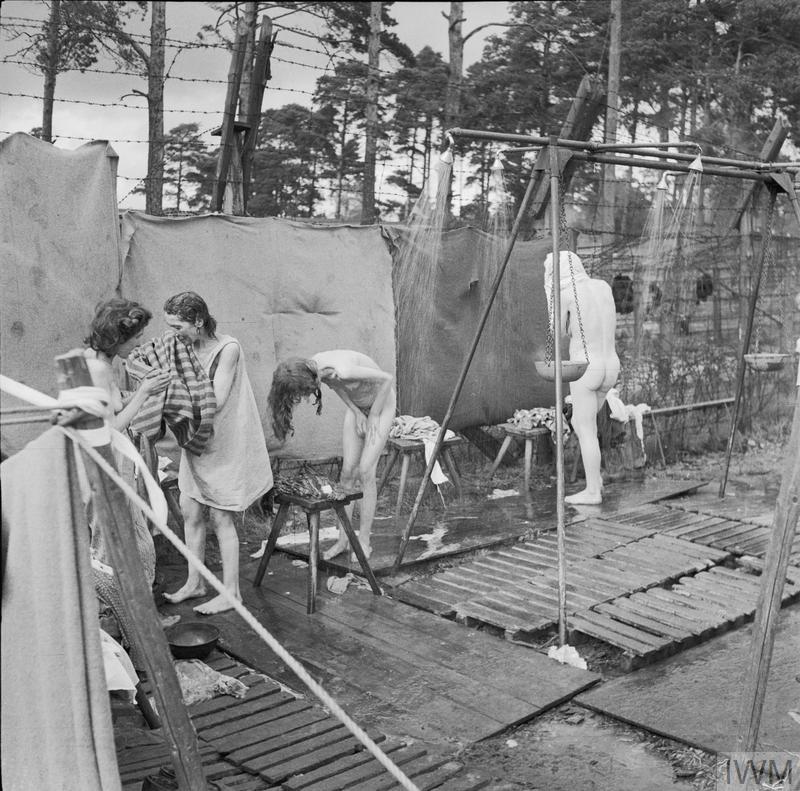
Copyright: © IWM. Original Source
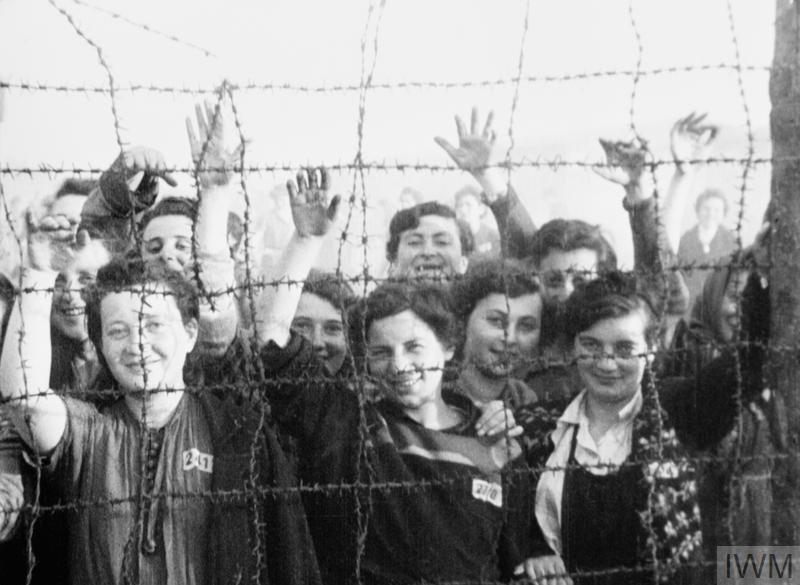
For those more personal histories, Erti’s insights give us a very up front and honest look at the British medical staff involvement in the liberation. This rare resource gives us the chance to gain a deeper understanding of the atrocities of Bergen-Belsen witnessed through one individuals eyes. It is sometimes difficult for people to understand how and why people put themselves in the way of danger to help others. Some of us are currently able to stay at home to contribute to the flattening of the curve, others are still having to go to work, unable to work from home, but who are still practising social distancing and contributing to the running of our country, and of course there are those who are key workers and medical staff assisting those most in need. We are showing our respect for the NHS staff putting themselves in the way of danger on a daily basis and it is challenging to comprehend their situation. Erti herself was asked the question why she stayed in Belsen and her answer resonates now.
“I stayed because I enjoyed it, helping people, I mean that was what St. John was for, you know, to help…I volunteered for oversees service and when asked where I wanted to go I said I wanted to go to Norway for some unknown reason but I finished up in a concentration camp, I didn’t regret it at all, I mean it was quite something, to help people.”
Erti Wilford
We should take a moment to remember those that helped others 75 years ago just as we continue to support the world’s current efforts in resolving a very different issue today. To all those that contributed to the liberation of Bergen-Belsen, thank you.
This article was researched and written by Jemma Lidgard and Hannah Congrave.

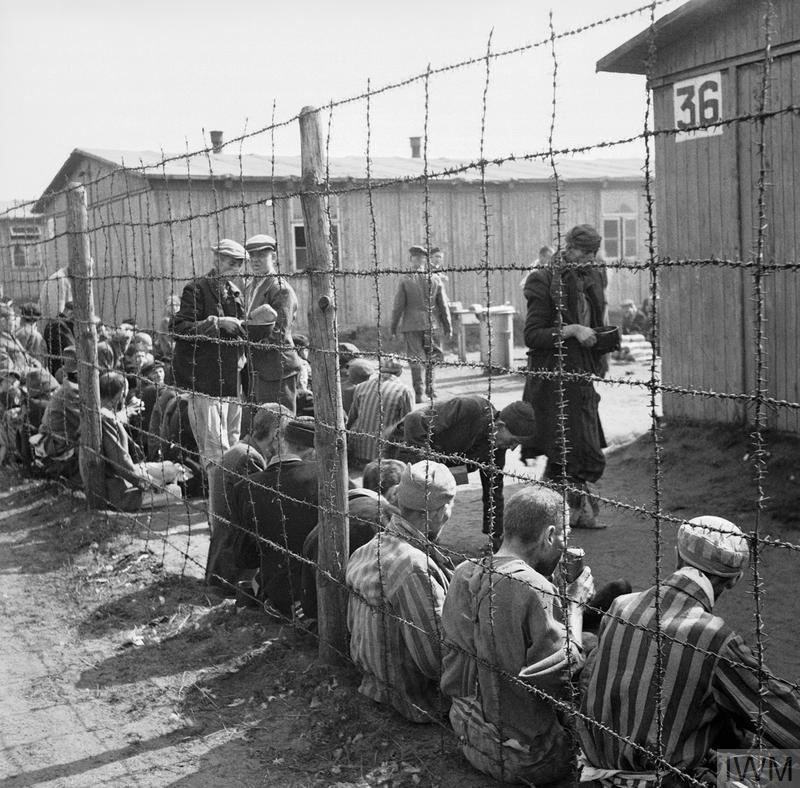
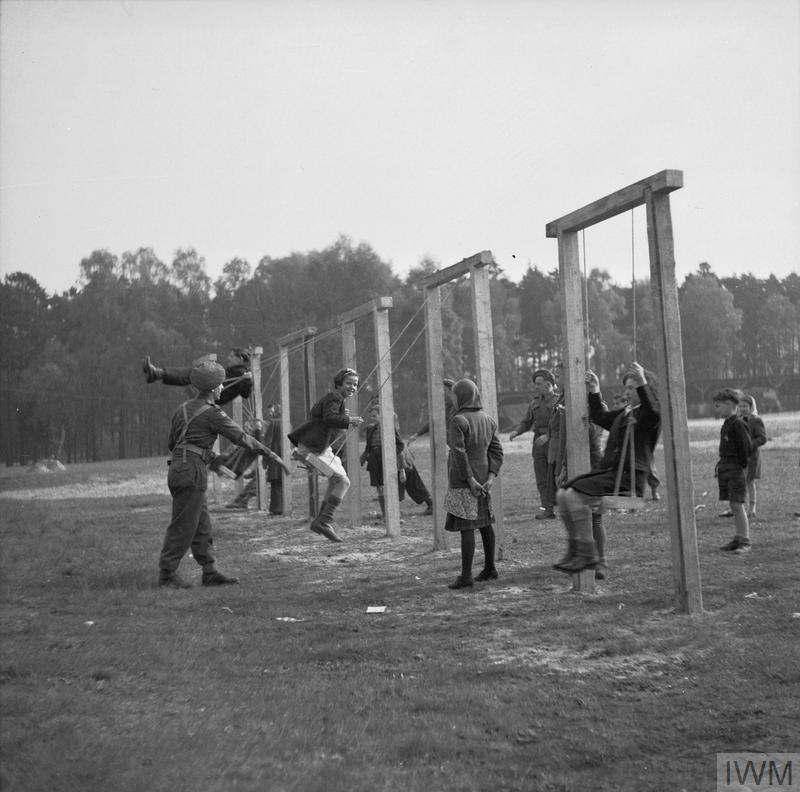
Copyright: © IWM. Original Source
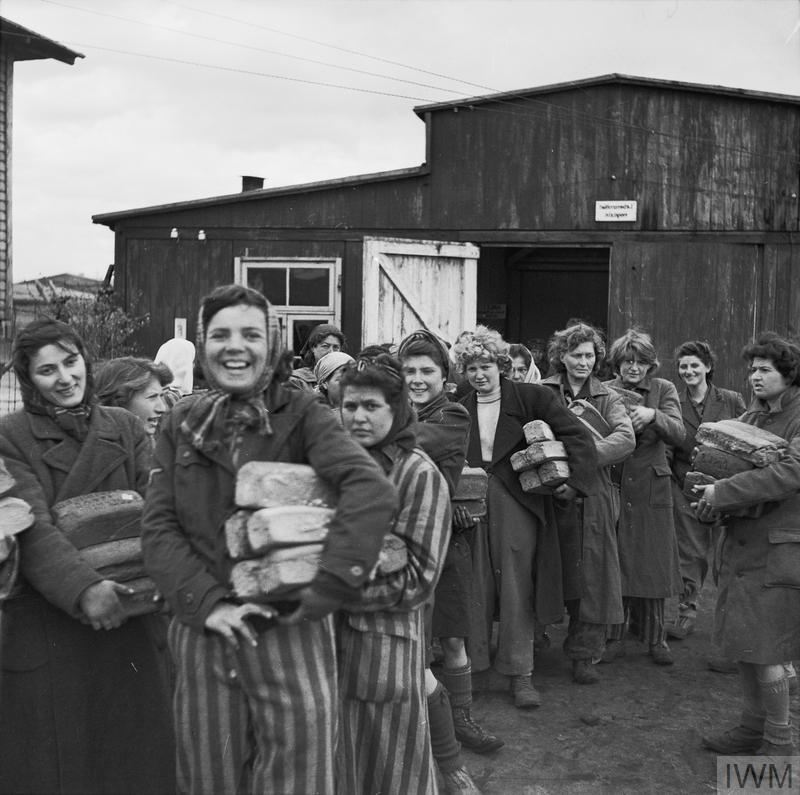
Copyright: © IWM. Original Source
Thank you for reading this article.
You can listen to Erti’s full interview here.
For further reading:
Belsen in History and Memory
‘Uninterested in anything except food’: the work of nurses feeding the liberated inmates of Bergen‐Belsen by Jane Brooks
Holocaust Educational Trust 70 Voices project
The National Holocaust Centre and Museum
If you are a student or staff member at the University of Leicester you will be able to access the following documentaries and programmes centred around Bergen-Belsen through our subscription to Box of Broadcasts:
Belsen: Our Story (2020) BBC2
The Relief of Belsen (2007) Channel 4
Victoria Derbyshire speaks to Anita Lasker-Wallfisch, who survived both Auschwitz and Bergen-Belsen concentration camps (2015) BBC News 24
Prisoner Number A26188: Henia Bryer (2013) BBC1
Antiques Roadshow Episode 13 Holocaust Memorial (2017) BBC1
All photographs used are from the Imperial War Museum Archive and published under the IWM Non-Commercial Licence. You can view more photographs associated with the liberation and many more subjects via the IWM’s collections here.